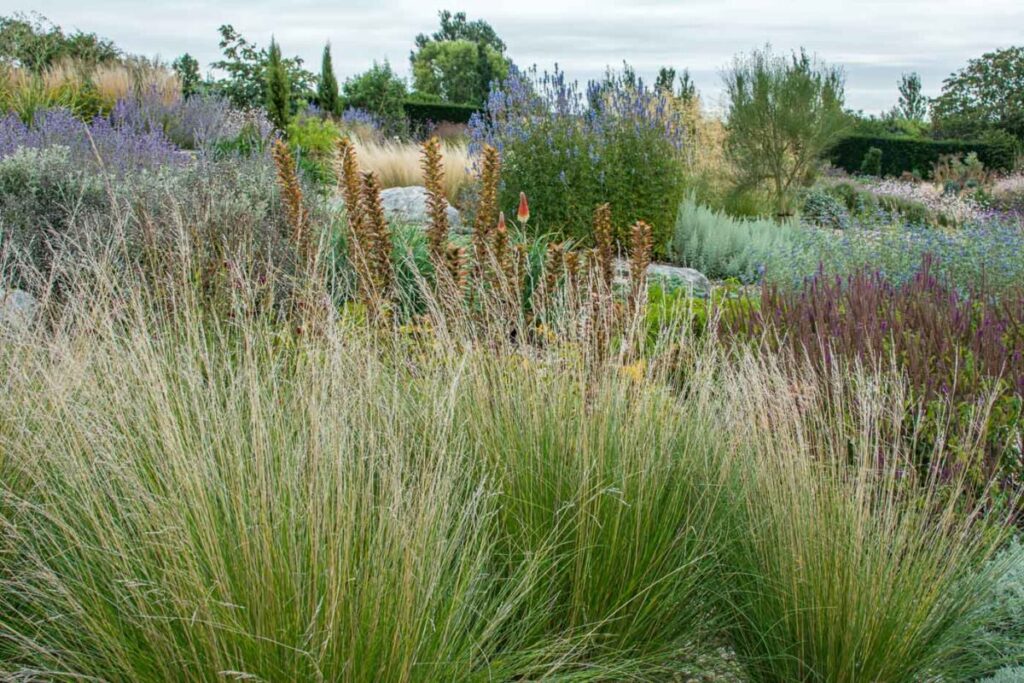
Drought tolerant gardens are the way forward…
When we're designing gardens the subject of climate change sometimes crops up and we're now often being asked whether it is possible to ‘drought proof’ a garden. One garden that has succeeded famously at this is the Beth Chatto Gardens in Essex and her ‘Gravel Garden’ has been an inspiration to gardeners and designers alike. Her gravel garden works with nature and does not fight against it, she used plants that will cope in dry conditions for example, Lavender, Cistus, Bergenia, Allium, Sedum and drought resistant grasses that have not been artificially watered since around 1992!
If you are thinking about having your garden designed and are starting with a blank canvass you could consider installing an underground rainwater harvesting system, a huge undertaking to be completed before the hard landscaping begins but well worth considering. Harvested rainwater has many uses around the house, for example flushing the toilet and for use in washing machines, but it can also be used to water the garden. Today a lot of people have water butts – which are great – but they don’t last long during a period of drought which we all saw this April when we had no rain for most of the month! It is also very important to choose your plants and the location of them carefully; you need to include plants that can cope with little water yet look good most of the year; after all you do want a beautiful garden.
High water use areas are lawns, vegetable patches and flower gardens so whether you are creating a new garden or adapting one you already have some ideas below show how you can reduce water useage:
Planting choice
- Plants that have the same watering needs can be grouped together
- Look out for drought tolerant plants, although they will need to be watered quite a lot in the first few years they will soon become independent
- Consider using limited annuals
Planting location
- More needy plants can be located nearer the house making it easier to get water to them
Soil structure
- Improving the structure of your soil by using manures, leaf mould etc will help soil retain water for longer
Lawns
- Consider whether or not you really need a lawn or really need such a large one
Mulches
- Using a decorative mulch will keep those pesky weeds down as they compete with plants for water
- It reduces the effect of water evaporation
Watering
- Watering the garden in the evening will ensure there is more water available to the plants for longer before the sun rises and it begins to evaporate
- Plants become stronger and are more able to resist some pest and disease attacks if watered correctly, therefore watering for longer and less often encourages the plant roots to grow down through the soil rather than horizontally near the surface.
So you see, you can still have a beautiful garden if you work with nature and consider what else can be done and incorporated into the design to deal with our ever changing weather.




